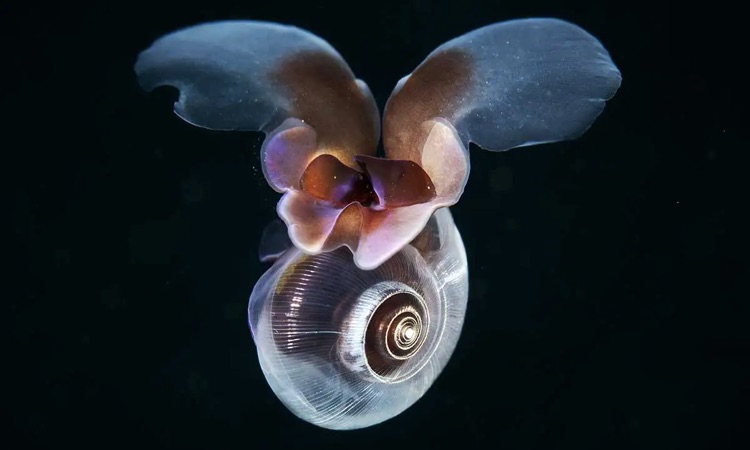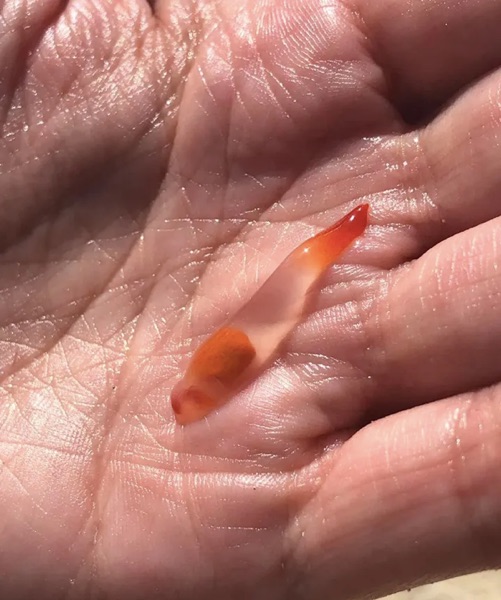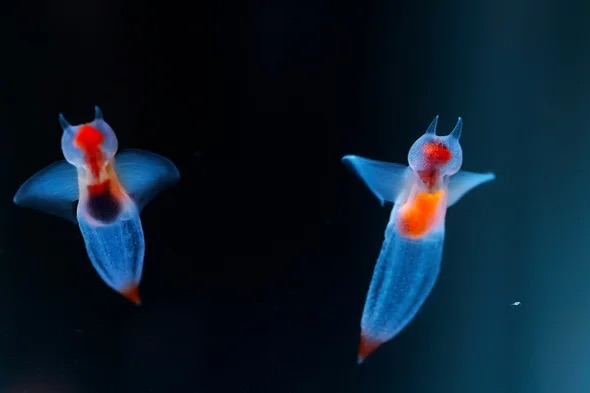Sea Butterfly: All you Need to Know
The sea butterfly is a category of marine mollusk species. They are essential to the oceanic food chain.
The sea butterfly is a suborder of swimming gastropod mollusks known as Thecosomata or thecosomes. They are classified in the class Gastropoda and further grouped into Pteropods, which includes all winged creatures.
Gastropods play an important role in the ocean ecosystem. They provide food for many creatures and have a significant impact on the carbon cycle of the earth’s oceans.

Facts about Sea Butterflies
- They are hermaphroditic.
- You can find them in the open ocean all over the world.
- Because of the wing-like lobes they employ to move through water, they are known as the “sea butterfly.”
Appearance
The sea butterfly has developed small wings out of its parapodia, or lobes. They may travel through the water by flapping these wing-like arms. The sea butterfly is a tiny marine snail that rarely grows larger than 1 cm in length.
Although sea butterflies resemble sea angels, the latter does not have a transparent shell composed of calcium carbonate. This type of body allows them to adapt to survive in the ocean’s acidic environment.

Morphology
The name comes from the fact that they can swim, thanks to their wings. They are carried along with the currents and float in the water. As a result, their bodies have undergone a variety of changes.
The shell and gill have vanished from several families. The gastropodal foot has evolved into two wing-like lobes, or parapodia, which propel the animal through the water by slow flapping motions.
The majority of Thecosomata have a calcified shell, although it is usually very thin. They are impossible to spot since the majority of their shell (if there is one) is transparent, flimsy, and generally tiny: less than 1 cm in length. Although their shell may be so delicate that it appears to be glassy, it is nevertheless calcified, and an essential component of the ocean calcium cycle.
Their shells are bilaterally symmetric, meaning that they have a left and right side that are mirror images of each other. Shells can vary widely in shape: coiled, needle-like, triangular, or globular.
The shell is a common trait in all stages of the Cavolinioidea’s (euthecosomata) life cycle. In contrast, adult Peraclididae in the Cymbulioidea group (pseudothecosomata) also have shells. However, larvae Cymbuliidae lack any rigid covering as adults and develop a cartilaginous pseudoconch instead.
Habitat
The sea butterfly is a pelagic animal that lives in the most open of seas and rarely approaches the beach or the seafloor, and it can be found only in seawater. They are documented to range from British Columbia to California along the western coast of North America.
These molluscs also dwell in the North Atlantic Ocean. They range from the tropics’ warm water to the rather chilly polar seas.

Diet
The majority of sea butterflies are believed to be passive feeders that consume plankton. The technique, on the other hand, is quite unusual. They employ a 5 cm mucous web like a net to capture planktonic food.
The net is actually larger than the sea butterfly’s body. If they are disturbed while feeding, they will abandon their efforts and toss the net away.
The sea butterfly has a distinct daily feeding pattern. First, they migrate into the water column to follow the plankton. Then, they stay at the ocean surface in warm surface water during the night. Finally, they visit deeper waters at dawn.
Reproduction
Sea butterflies are hermaphrodites because they have both male and female reproductive organs. The butterfly begins as a male before maturing. They only begin to produce eggs after they’ve reached maturity, which are then released into the water until they hatch.
Threats
The sea butterfly is largely endangered due to the damaging effects of climate change on its natural habitat.
The aragonitic shell of the creature leaves it highly susceptible to changes in PH, or acidity levels, in the water.
This is caused by an increase in carbon dioxide and other harmful gasses released into the air by human activity. Too much CO2 in the ocean can cause acidification, which alters the ecosystem’s pH.
The danger of predators adds to the difficulties that sea butterflies must face. Due to their tiny size, they are a simple target and often become prey.
They’re eaten by whales and other similar aquatic creatures in large quantities, putting them at risk. When they operate on the water’s surface, they must also keep an eye out for sea birds.

:o)
I'd like to how well this animal fares when a volcano explodes releasing massive amounts of carbon dioxide, as well as massive amounts of very highly acidic water-soluble sulfuric and sulfurous oxides, as well as massive amounts of very highly acidic water-soluble nitrogen oxides, as well as massive amounts of very highly acidic water-soluble phosphorus oxides.
ReplyDeleteUnfortunately, as soon as I read the penultimate sentences, I find I have a very strong tendency to discount whatever else I've read previously.
Now that's a good 'un, baron! :o)
ReplyDelete